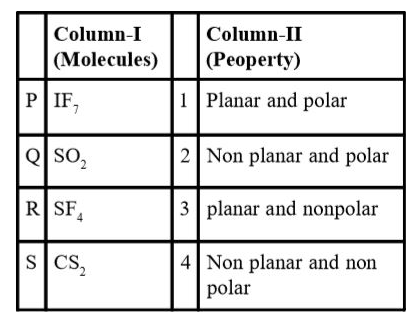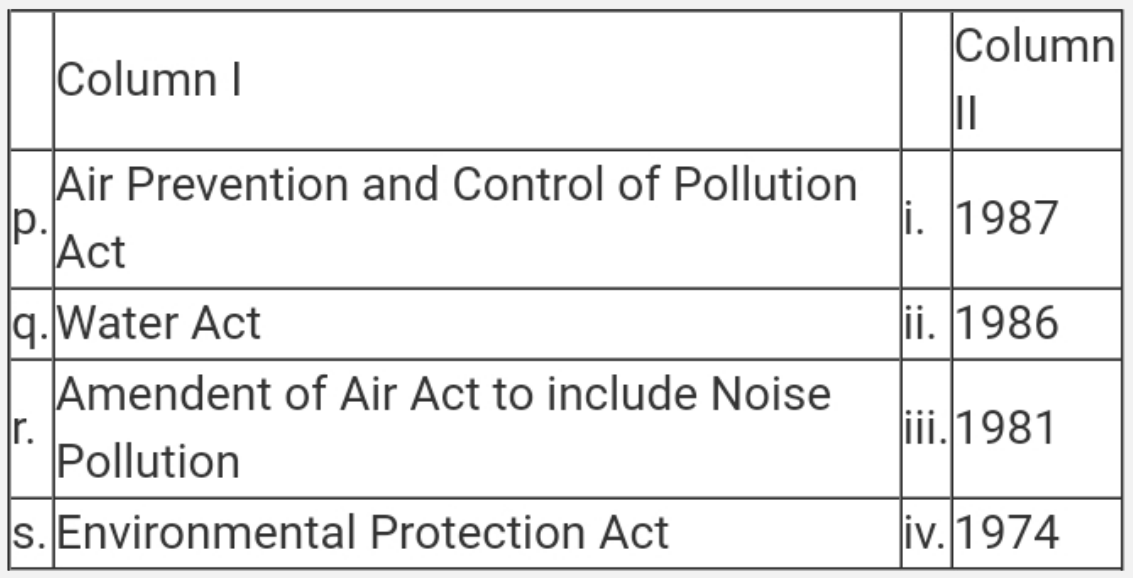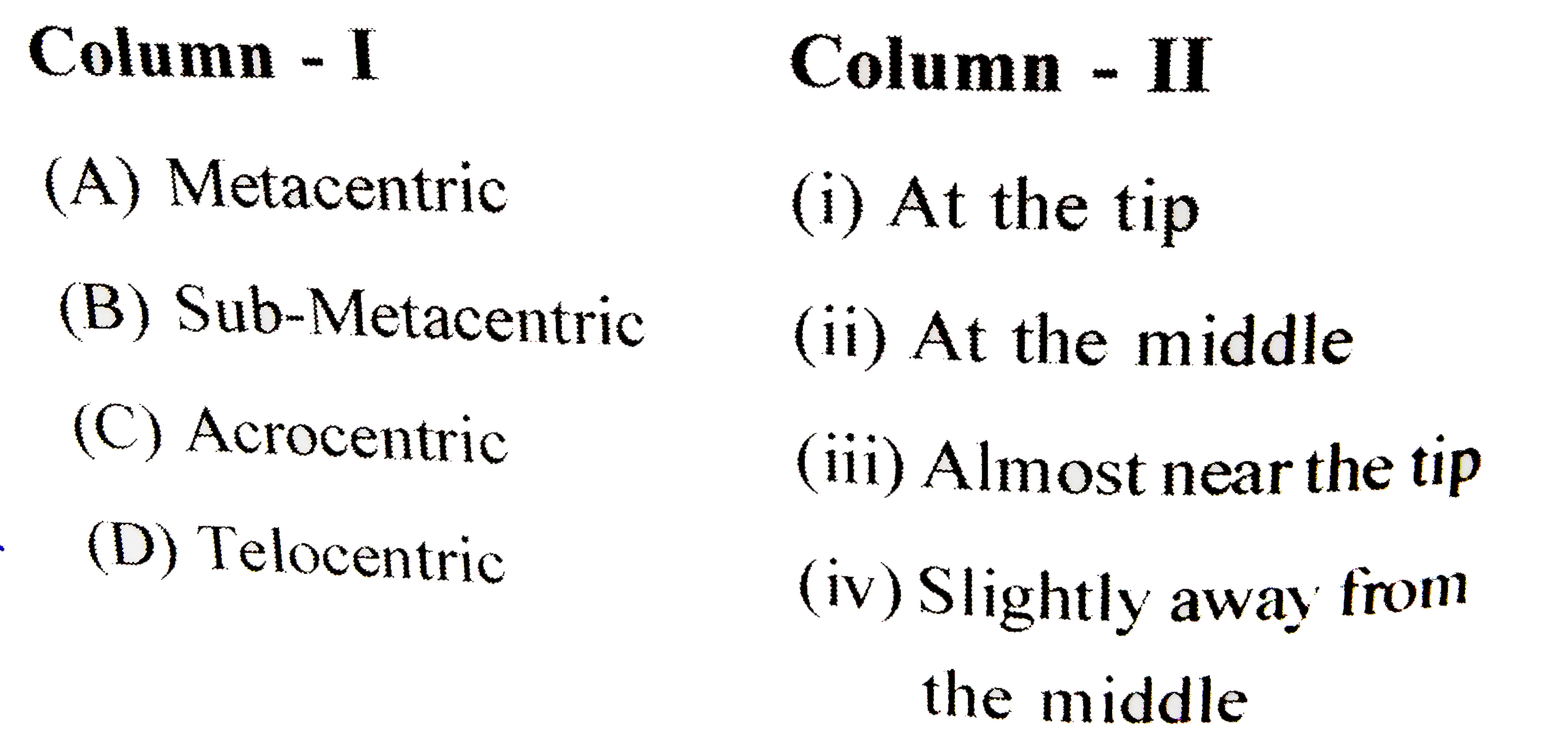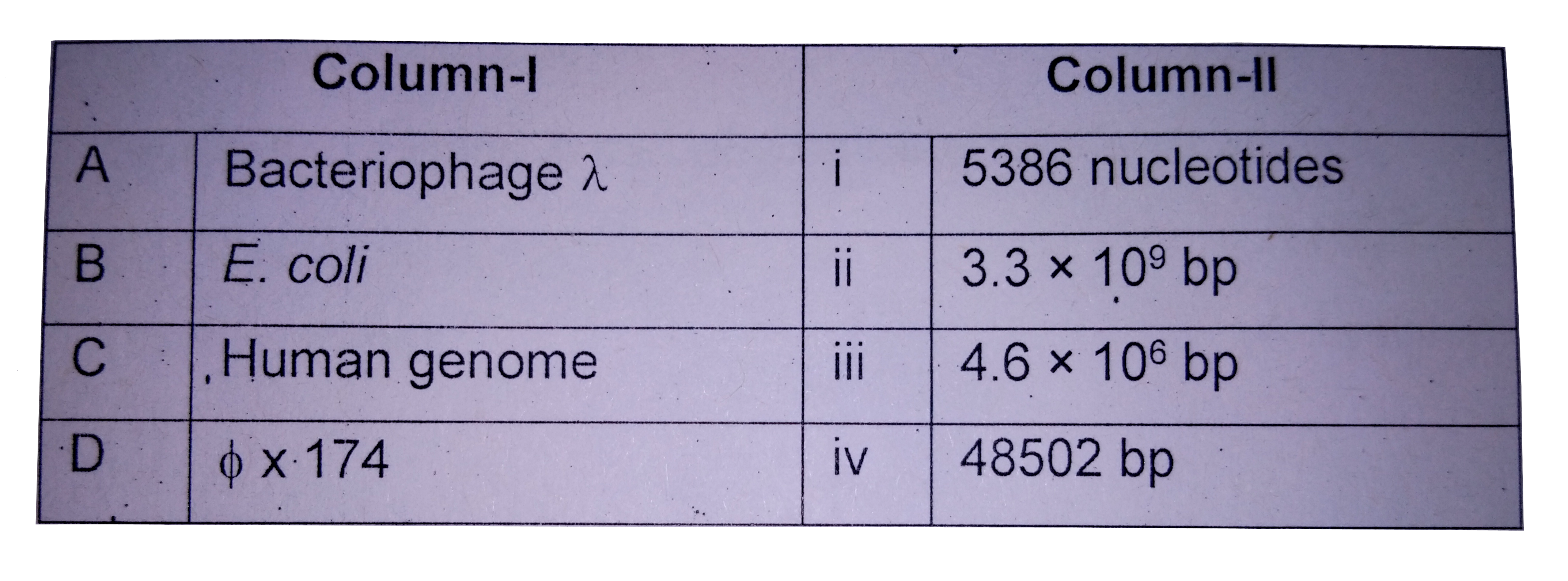Match the column-I with column-II and select the correct answer.
Column−IColumn−II(A)Pachytene(i)Synizesis(B)Zygotene(ii)Chiasma visible(C)Diplotene(iii)Terminalisation(D)Leptotene(iv)Gene exchange(E)Diakinesis(v)Synapsis
(A)-(i),(B)-(ii),(C )-(iii),(D)-(iv),(E )-(v)
(A)-(iv),(B)-(v),(C )-(ii),(D)-(i),(E )-(iii)
(A)-(iii),(B)-(iv),(C )-(v),(D)-(ii),(E )-(i)
(A)-(ii),(B)-(iii),(C )-(iv),(D)-(i),(E )-(v)
The correct Answer is:B
To solve the matching question between Column-I and Column-II, we need to analyze each term in Column-I and find the corresponding term in Column-II based on their definitions and characteristics during meiosis.
1. Identify the terms in Column-I:
- A) Pachytene
- B) Zygotene
- C) Diplotene
- D) Leptotene
- E) Diakinesis
2. Analyze each term:
- A) Pachytene:
- This stage occurs during prophase I of meiosis. It is characterized by the formation of the synaptonemal complex between homologous chromosomes, allowing for genetic exchange (crossing over).
- Match: A → (iv) Gene exchange
- B) Zygotene:
- This stage is marked by the pairing of homologous chromosomes, which is facilitated by the formation of synapses.
- Match: B → (v) Synapsis
- C) Diplotene:
- In this stage, homologous chromosomes begin to separate but remain connected at points called chiasmata, where crossing over has occurred. Chiasmata become visible during this phase.
- Match: C → (ii) Chiasma visible
- D) Leptotene:
- This is the initial stage of prophase I where chromosomes start to condense and become visible. The chromosomes are not yet paired, but the process of synapsis begins.
- Match: D → (i) Synizesis
- E) Diakinesis:
- This is the final stage of prophase I where the chromosomes condense further, and the chiasmata move towards the ends of the chromosomes, a process known as terminalization.
- Match: E → (iii) Terminalisation
3. Final Matching:
- A) Pachytene → (iv) Gene exchange
- B) Zygotene → (v) Synapsis
- C) Diplotene → (ii) Chiasma visible
- D) Leptotene → (i) Synizesis
- E) Diakinesis → (iii) Terminalisation
Correct Answer:
- A → (iv), B → (v), C → (ii), D → (i), E → (iii)
- A) Pachytene
- B) Zygotene
- C) Diplotene
- D) Leptotene
- E) Diakinesis
- A) Pachytene:
- This stage occurs during prophase I of meiosis. It is characterized by the formation of the synaptonemal complex between homologous chromosomes, allowing for genetic exchange (crossing over).
- Match: A → (iv) Gene exchange
- This stage is marked by the pairing of homologous chromosomes, which is facilitated by the formation of synapses.
- Match: B → (v) Synapsis
- In this stage, homologous chromosomes begin to separate but remain connected at points called chiasmata, where crossing over has occurred. Chiasmata become visible during this phase.
- Match: C → (ii) Chiasma visible
- This is the initial stage of prophase I where chromosomes start to condense and become visible. The chromosomes are not yet paired, but the process of synapsis begins.
- Match: D → (i) Synizesis
- This is the final stage of prophase I where the chromosomes condense further, and the chiasmata move towards the ends of the chromosomes, a process known as terminalization.
- Match: E → (iii) Terminalisation
- A) Pachytene → (iv) Gene exchange
- B) Zygotene → (v) Synapsis
- C) Diplotene → (ii) Chiasma visible
- D) Leptotene → (i) Synizesis
- E) Diakinesis → (iii) Terminalisation
- A → (iv), B → (v), C → (ii), D → (i), E → (iii)
Topper's Solved these Questions
- CELL CYCLE AND CELL DIVISIONBook:CENGAGE BIOLOGY ENGLISHChapter:CELL CYCLE AND CELL DIVISIONExercise:Assertion-Reasoning Questions
Explore 4 Videos
- CELL CYCLE AND CELL DIVISIONBook:CENGAGE BIOLOGY ENGLISHChapter:CELL CYCLE AND CELL DIVISIONExercise:ARCHIVES (Chose the corrct option):
Explore 21 Videos
- BREATHING AND EXCHANGE OF GASES Book:CENGAGE BIOLOGY ENGLISHChapter:BREATHING AND EXCHANGE OF GASES Exercise:Archives
Explore 15 Videos
- CELL: STRUCTURE AND FUNCTIONSBook:CENGAGE BIOLOGY ENGLISHChapter:CELL: STRUCTURE AND FUNCTIONSExercise:ARCHIVES
Explore 50 Videos
Similar Questions
Match column-I with column-II and select the correct answer :-

View SolutionMatch column I with column II and select the correct answer :

View SolutionMatch the columns-I with column-II and select the correct answer :-
Column-I Column-II(A)Pachytene(i)Bouqute stage(B)Zygotene(ii)Chiasma visible(C) Diplotene(iii)Terminalisation(D)Leptotene(iv) Gene exchange(E)Diakinesis(v) Synapsis
View SolutionMatch the Column -I and Column-II and select the correct answer :-

View SolutionMatch column-I and column-II and select the answer :

View SolutionMatch the column I, II and III to select the correct answer

View SolutionMatch column-I to the column-II and select the option having correct matching –

View SolutionMatch column-I with column-II and select the correct option.
Column-IColumn-II(a)Family(i)Solanum tuberosum(b)Kingdom(ii)Polymonials(c)Order(iii)Solanum(d)Species(iv)Plantae(e)Genus(v)Solanaceae
View SolutionMatch the columns.
Column -IColumn -I(a)Leptotene(i)Chiasmata(b)Zygotene(ii)Chromosomes visible(c)Pachytene(iii)The pairing of homologous chromosome (d)Diplotene(iv)Clear appearance of tetrads
View SolutionMatch column I with column II and select the correct answer from the given codes.
Column IColumn IIA.Wax(i)Interspecific hybridisationB.Pollinator(ii)MicropopagationC.Mule(iii)BeeD.Tissue culture(iv)Apiculture
View Solution